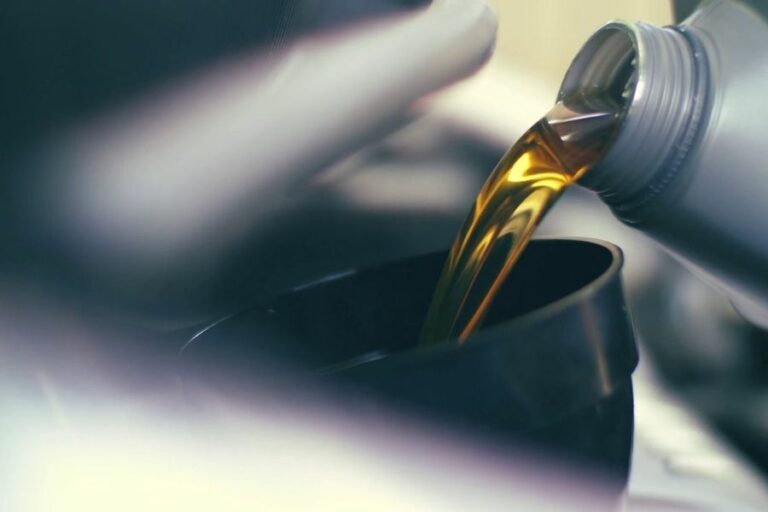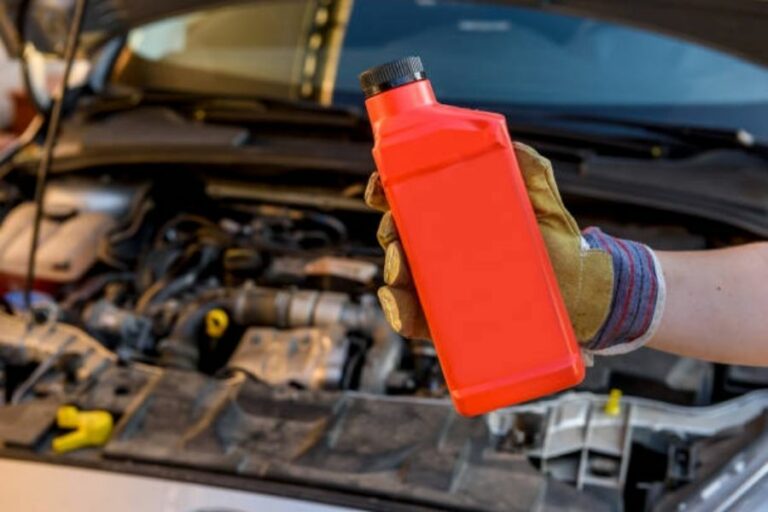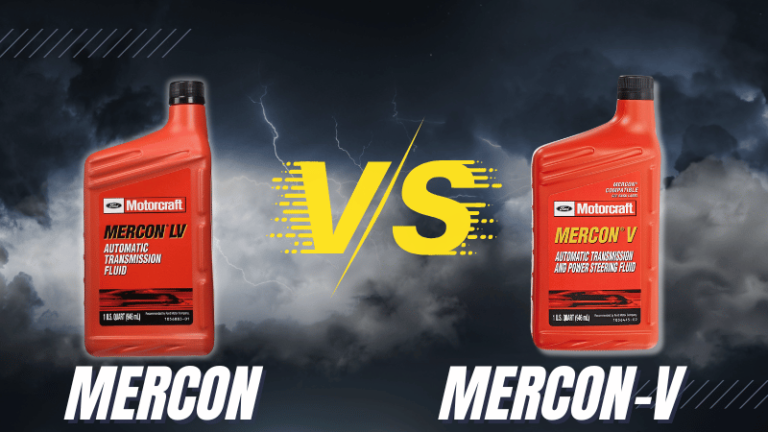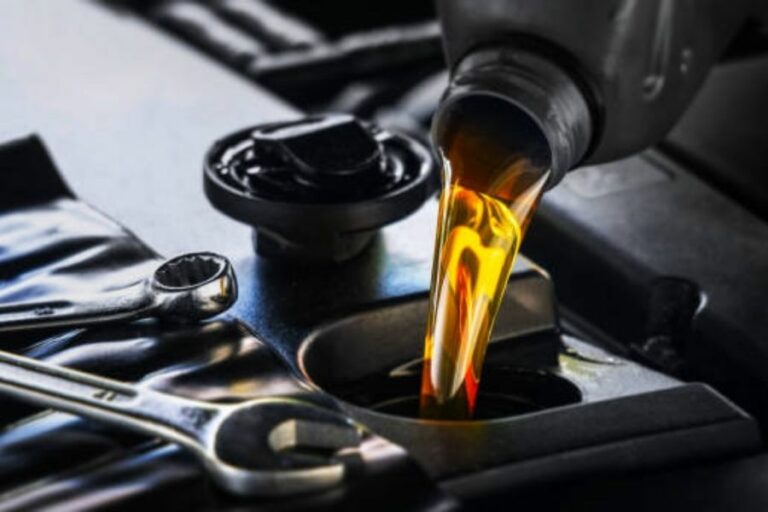Turbo 350 Transmission Fluid Type and Capacity
The Turbo 350 transmission has been around since the sixties. To this day, it has retained its popularity among car owners. The reason for this long-term success is the impeccable performance of the transmission.
However, don’t expect the Turbo 350 to deliver its best if you are not using the correct transmission fluid type according to its capacity. Find out more.
So here we are going the discuss the best th350 transmission fluid type. Stays with us to know the turbo 350 transmission fluid type.
Are all Turbo 350 Transmissions the Same?
From the outside, all the Turbo 350 Transmissions look more or less the same. But there are some internal differences depending on the workload the transmission has to bear. These include the clutch plate, tail housing, and tail length.
Clutch Plates and Friction Discs
The number of clutch plates and friction discs inside a Turbo 350 transmission can vary.
Some TH 350 have ten clutch plates and a similar number of friction discs. Meanwhile, in some transmissions, the number might be eighteen.
The clutch plates maintain the engagement of the transmission with the engine. They are essentially metal plates with some friction material on them.
Some clutch plates have a higher degree of friction material to increase torque capacity. These are called friction discs.
Usually, heavy vehicles with large engines have more plates and discs in their transmissions. In contrast, the smaller engine and light vehicles have fewer plates.
Read Also: Mazda 3 Transmission Fluid Type
External Housing
The difference between external or tail housings is crucial when you are picking up a new transmission for your vehicle.
If the external housing of the new Turbo 350 doesn’t correspond to the former one, the transmission wouldn’t fit in your car.
The tail housing is usually bolted to the back end of the transmission case. It lies just before the axle and driveshaft. Various important components like the output shaft, tail shaft seal, and rear bearing are within this housing.
The Turbo 35O tail housing usually comes in three sizes. You will usually find 6,9 or 12 inches of extension from the body case.
Before getting a new transmission check how much space you have available to get an idea. That is, of course, when you don’t have the old one around.
Short-Tailed vs. Long-Tailed
There are two kinds of Turbo 350 transmission based on tail shaft length. The short-tail Turbo 350s have an overall length of 27 ⅝ niches. Meanwhile, the long tail variations are 30 ⅝ in total length.
You must know which type of transmission your vehicle needs when you install a new one.
Otherwise, the transmission wouldn’t align properly with the drivetrain components. Thus, hindering your vehicle’s performance.
Usually, longer vehicles require long-tail transmissions. Similarly, smaller cars require transmissions that are short-tailed. But the arrangement of the driveshaft and rear axle needs to be taken into account too.
Read Also: Dodge Ram 3500 Transmission Fluid Type
What Is The Best th350 Transmission Fluid Type?
Dexron III is the best automatic transmission fluid type for Turbo 350. Its ingredients include synthetic base oil and special additives. Mercon is another ATF (developed by Ford) that works well with this transmission.
One of the main reasons for recommending Dexron is that it was developed by the same company that manufactured the Turbo 350- General Motors. So, safe to assume that there will be no compatibility issues.
The composition of Dexron III makes it an ideal ATF for a range of vehicles. It enhances your engine’s performance.
At the same time, it also has protective functions against excess temperature, loads, and general wear.
As a result, it improves the longevity of your Turbo 350 transmission. Plus, you experience better fuel economy.
Here is a comparison between some of the top Dexron III ATF products in the market-
| ATF Product | Base oil type | Dexron Specification | Compatible with transmissions |
| Valvoline MaxLife Multi-Vehicle ATF | Synthetic and conventional | Dexron III | GM, Hyundai, Toyota, Nissan, Hyundai, Ford, etc. |
| Max ATF-Royal Purple | Fully synthetic | Dexron III | Audi, BMW, Chrysler, Ford, Honda, GM, etc. |
| Castrol Transmax Dex/Merc ATF | conventional | Dexron III, Mercon | Especially recommended for older ford and GM transmissions. |
| Mobil 1 Synthetic ATF | Fully synthetic | Dexron III | High-performance SUVs and Vans |
Understanding Turbo 350 Transmission Fluid Capacity
The Turbo 350 transmission has a fluid capacity of 10-12 quarts (9.5-11.4 liters). This capacity can slightly vary depending on the year it was made and the type of vehicle the transmission is used in.
The length of the tail housing, the fluid cooler lines, and the torque converter also influence the capacity of the transmission.
Also, if you had made any after-market modifications to your transmission, the capacity can slightly deviate from what the manufacturer’s guide specifies.
When you are putting ATF in a dry Turbo 350, put in 4 quarts of fluid first. Then run the engine for a while to settle in the new fluid. This is because there will be some older fluid in the lines and converter.
If you don’t calibrate it with the new fluid, there might be overflow and damage.
Once you have put in the 4 quarts and run the engine for a while, add the rest of the fluid in half-quart increments. Conduct a dipstick test after adding each increment to prevent overfilling.
Read Also: Allison 1000 Transmission Fluid Type
How To Check And Maintain Turbo 350 Transmission Fluid Level?
A healthy transmission means better vehicle performance and longevity. So, regularly check your Turbo 350’s fluid levels. This simple maintenance protocol can save you from costly future replacements.
Park and Warm-up
Park your vehicle on solid level ground. Otherwise, the fluid might shift to one side and your readings will be inaccurate. Now, turn on the engine and idle it for one to two minutes.
You are idling the engine because cold transmission fluid compresses. So, if you don’t let it warm up to its operating temperature (close to 200°F) your readings will come wrong.
Because the ATF will expand when working at its operating temperature. Similarly, if you heat it up too much, the fluid will over expand. That too will yield faulty results in the dipstick.
The Dipstick Test
You will find the dipstick at the rear part of the engine compartment. If it’s not there, check your owner’s manual.
Usually, the dipstick is brightly colored to quickly catch the eye. There might also be a label that reads transmission.
Pull the dipstick out. Wipe it with a rag or paper towel to clean it. Now put it back again. Ensure it has gone all the way in. Now again pull the stick out.
Interpreting the Reading
The dipstick has two markings- Full and Add. When your ATF level is fine you will see it had settled midway between the two markings when you inserted the stick.
In the case of low ATF, you will see the fluid level marked below ‘Add’. And if the fluid’s overflowing the level will go past the ‘Full’ mark.
When your fluid level is running low, add Dexron III-specific ATF through the dipstick tube. Fill up in small increments. And if the fluid’s overfilled, use a baster or similar tool to suction off the excess fluid.
You should also inspect the condition of the transmission fluid when you are checking the level. Your inspection can reveal symptoms that tell you the fluid has gone bad and you need to change it.
Read Also: Duramax Allison Transmission Fluid Type
When to Change Turbo 350 Transmission Fluid?
Old and contaminated transmission fluid will hinder the performance of your vehicle. At the same time, it will cause long-term damage to your engine and transmission components. So, check for these signs and change the fluid if necessary.
Appearance and Smell
The color of the transmission fluid might slightly vary depending on the brand. However, fresh fluid will always be translucent and light-colored, no matter what shade they are.
On the other hand, the fluid looks dark and unclear when it’s contaminated or old. So if your ATF has taken a deep red or brown hue, you need to change it.
You will also catch a whiff of burnt and repulsive smell when your transmission fluid is past its due.
Abnormal Noises
Bad transmission can also be the cause of abnormal noises in your vehicle. For instance, you will hear a whining sound when you put your car in reverse. This happens because the dirty fluid can’t flow as it should and clogs the lines.
You will also hear grinding noises from the transmission when the ATF has lost its quality.
One of the main jobs of the fluid is to lubricate the parts of the transmission. Bad fluid is incapable of doing it. The lack of lubrication makes the parts grind and wear away quickly.
Driving Performance
Your driving will suffer much when the ATF needs changing. When the fluid is old, it can’t provide hydraulic power like it used to.
As a result, you will often experience gear slippage while driving. Another problem associated with dirty ATF is moving in reverse.
When the fluid gets too thick from contamination it cannot freely flow through the lines. Therefore, you won’t be able to move the car in reverse.
Tips To Enhance Turbo 350 Transmission Performance
The Turbo 350 is a decent automatic transmission. However, it has kind of a classic design and might sometimes have a hard time competing with newer transmissions. Well. here are some of the enhancements you can try-
- Install a high-quality transmission cooler to consistently maintain the transmission fluid temperatures.
- An after-market shift kit can improve gear shifting.
- Always use high-quality Dexron III-specific ATF
- Add a higher stall torque converter for better driving performance.
- Ensure regular maintenance; i.e. cleaning, checking fluid levels and quality, and inspecting for leaks.
Read Also: Ford Type F Transmission Fluid
FAQs.
Hopefully, you found answers to most of your queries regarding the th350 transmission fluid type and capacity. However, we might have missed some questions. Feel free to ask them here.
Can I use Dexron IV ATF in a Turbo 350 transmission?
The Turbo 350 transmission follows a classic design. It’s best compatible with a similarly older ATF like Dexron III. Newer versions of the Dexron are better suited for modern transmissions.
How often should I change the Turbo 350 transmission fluid?
It is recommended to change your transmission fluid and filter after driving 30,000-60,000 miles. For the average car, that roughly translates to two-three years. However, busier and frequently extra load-bearing vehicles might have to change the fluid sooner.
Can you mix different brands of ATF together?
It’s not a good practice to mix different brands of ATF together. The additives and chemical composition of ATFs vary across brands and mixing them together might cause undesired effects. So, stick to one specific brand.
Why is overfilling transmission fluid bad?
When there is more fluid than the Turbo 350’s capacity, the ATF isn’t cooled down properly. This results in overheating. Plus, the extra fluid puts too much stress on the transmission components. There can also be fluid leakage, which damages other parts of the engine.
What precautions should I take when handling Turbo 350 transmission fluid?
Repeated contact between the skin and the ATF can cause redness, burning and other complications in some cases. So, wear protective gloves when you are performing a fluid change. Also, work in a well-ventilated area.






